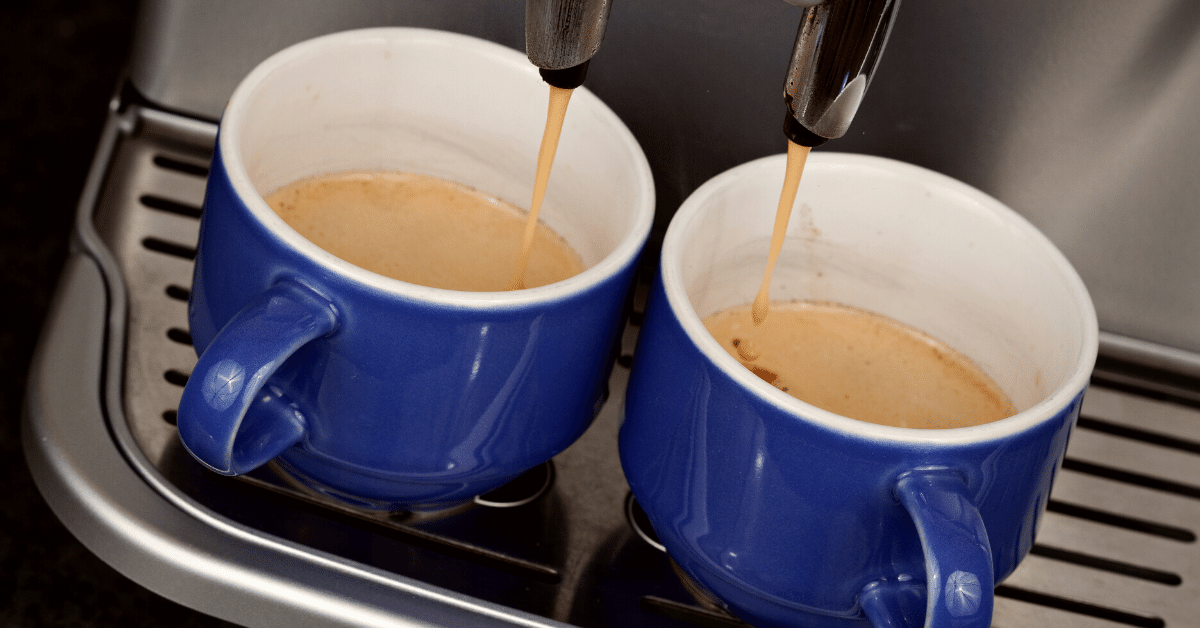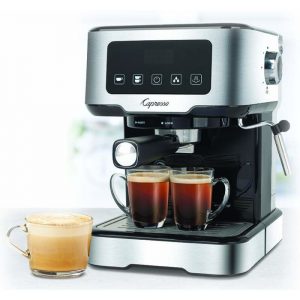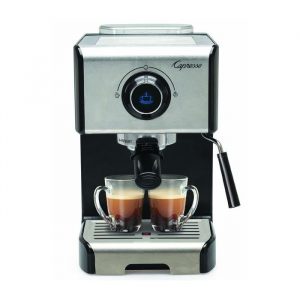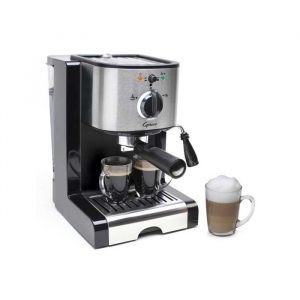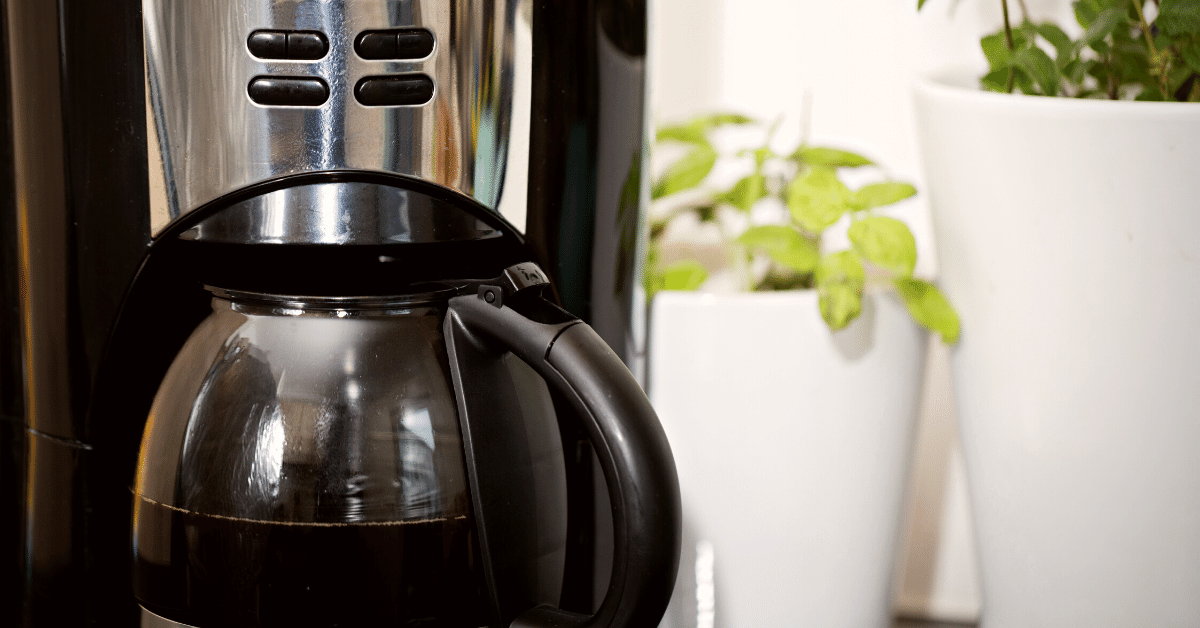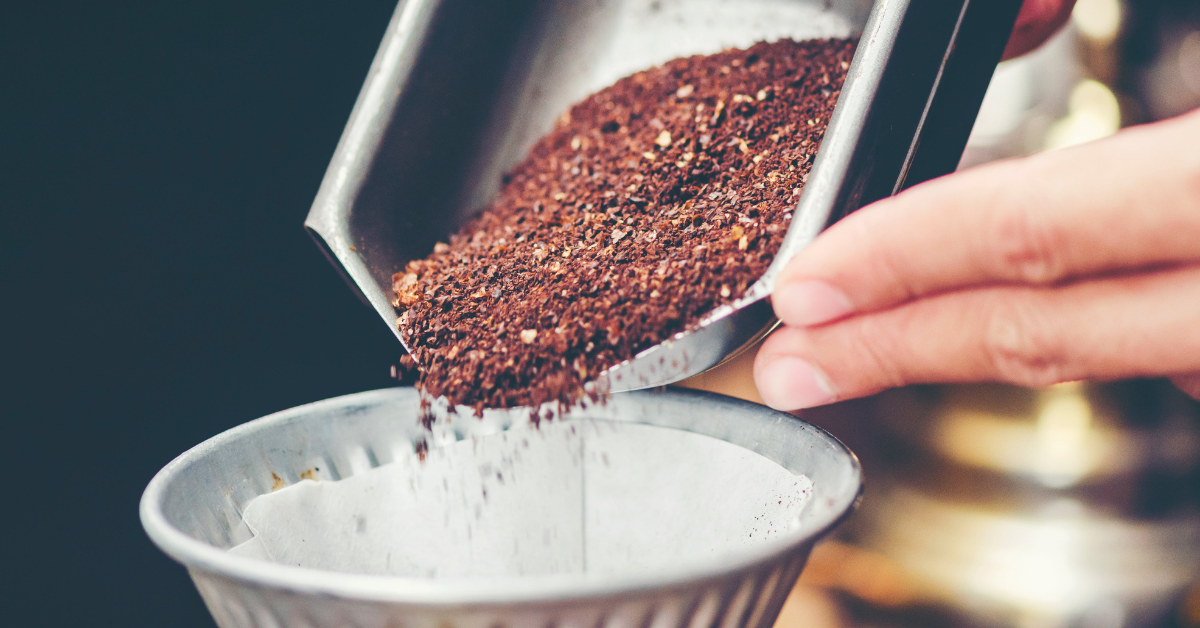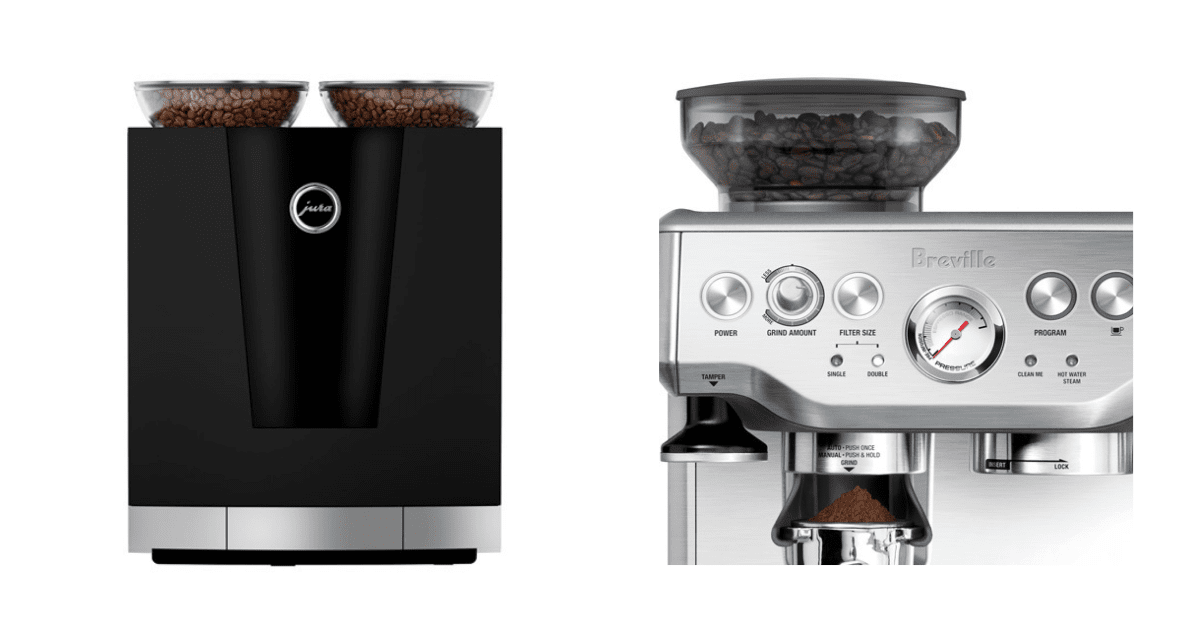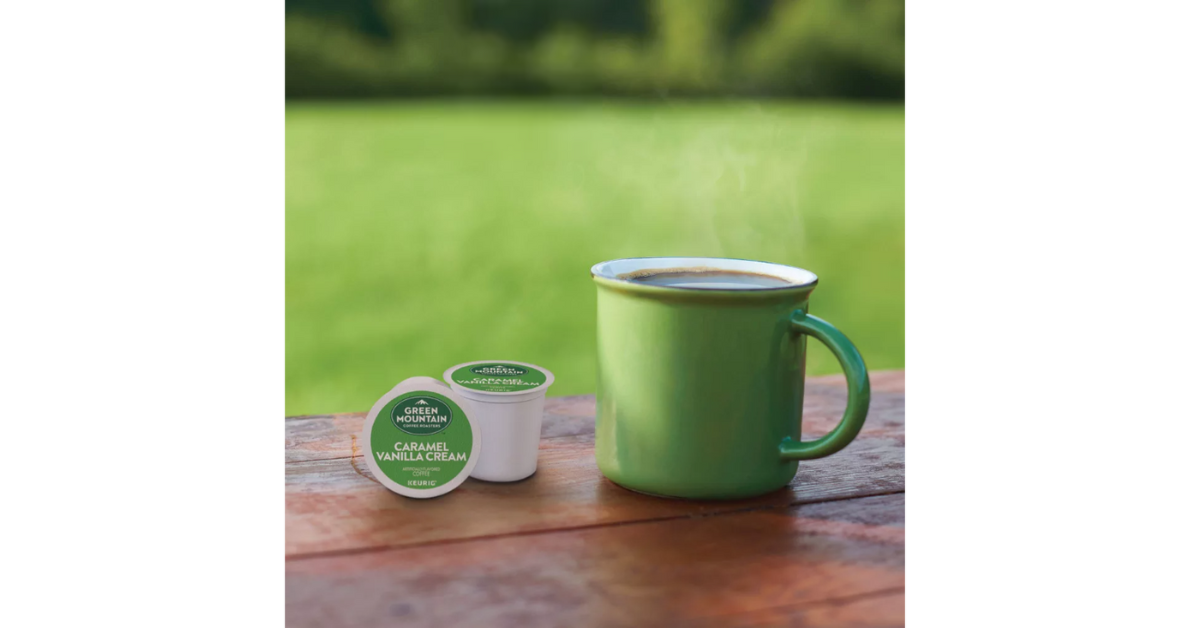In a hurry? Our top pick for the best espresso machine under 200 dollars is Capresso Café TS Espresso Machine.
Who said that making espresso at home requires tons of money?
There are some pretty affordable models out there that make a really nice cup of joe.
And to save you time, I’ll share with you my reviews of the best espresso machine under $200, as well as models that come close.
Let’s dive in.
Best Espresso Machine under $200: Top 5 Picks
- Capresso Café TS Espresso Machine (Best Overall)
- Capresso Ultima Pro (Most Intuitive)
- Capresso EC300 Espresso Machine (Best for Large Households)
- Illy Y3.3Espresso & Coffee (Best for Regular Espresso)
- Capresso EC100 Espresso Machine (Most Durable)
Capresso Café TS Espresso Machine
At this price range, this is definitely the best semi automatic espresso machine you can find.
And that’s clear even by looking at it. The large touchscreen panel with icons not only gives off modern vibes but is also easy to use.
With five buttons featuring intuitive icons, making espresso with this coffee maker is a piece of cake. Just choose between brewing and steaming, then pick the cup size, and that’s it. Also, you can use both coffee grounds and capsules.
Not a lot of bells and whistles – but this coffee machine doesn’t need them. It has everything it needs for making a good espresso shot. Most importantly, it has a 15-bar pump that can pull enough pressure to create that lovely crema on top of your coffee drink.
The Pannarello-style steam wand is also worth a mention. You can choose between frothy and creamy results, depending on whether you’re drinking a cappuccino or a latte.
What I’m not impressed with is the low spout. This seems to be the case with most Capresso machines. There’s no way you can fit a tall mug underneath, meaning you’ll have to use a different cup for brewing.
Pros
- The Thermoblock heating system makes the coffee machine ready to use instantly
- The double spout allows you to brew two espresso shots at a time
- You can switch between coffee grounds or capsules depending on the situation
- A steam wand features frothy and creamy settings
Cons
- A low spout means you can only pour coffee directly into a small cup
Capresso Ultima Pro
The Ultima Pro is designed to make brewing coffee simple for everyone, whether you are a beginner coffee lover or a pro barista. The control panel is simple and intuitive, with just five buttons available.
What makes this espresso maker so beginner-friendly is the self-tamping portafilter. When you’re new to espresso making, leveling and tamping grounds can easily be overdone. And in that case, they might not get extracted properly. Well, that’s not the case with this coffee machine.
A warming tray on top of the espresso maker is also a nice touch. By pouring coffee into a prewarmed cup, it doesn’t lose its hotness from the cold ceramic. And that’s something every barista would do.
This machine uses a Pannarello-style steam wand, with two options. One creates a fluffy froth for cappuccino, while the other makes a velvety cream for a latte. For a coffee machine that’s this affordable, these options are quite impressive.
With that being said, customers reported that sometimes the wand doesn’t use hot enough steam. This results in mild foam in your coffee.
Pros
- A self-tamping portafilter allows you to get equal results each time
- A Pannarello-style wand allows you to make either a frothy or creamy foam
- Features integrated storage for coffee tools
- Thanks to the 15-bar pump, the machine creates a nice layer of crema
Cons
- The steam wand sometimes tends to use lower heat, resulting in lukewarm foam
Capresso EC300 Espresso Machine
If you live in a household with other coffee lovers, then you need a machine that can brew cup after cup without waiting. And this model by Capresso can certainly do so, thanks to the Thermoblock heating system.
As soon as you turn it on, this coffee machine is ready to make an espresso drink. And while you can’t brew and steam at the same time, you don’t have to wait between the two steps either.
And with a 42-ounce water tank, you can make a bunch of shots before you need to refill it. Not having to move it around a lot is a relief given this is quite a bulky machine.
As far as the control panel goes, this is a super simple espresso maker. There’s a single knob with just two functions: brewing and steaming. And to be honest, there’s no need for anything else.
The steam wand on this coffee machine is Pannarello-style, which is expected at this price range. This type of wand is designed to make frothing simple even for total beginners. But one thing I can say for sure is that it makes a pretty good foam.
Pros
- A single-knob control panel makes brewing a piece of cake
- The Thermoblock system allows the machine to heat up instantly
- The machine comes with two sieves, one for ground coffee and the other for pods
- A removable drip tray makes cleaning easier
Cons
- Slightly bulky compared to other models on the list
Illy Y3.3 Espresso & Coffee
It’s no secret that Illy makes excellent coffee. And for that reason, I had quite big expectations from this model. But I can definitely say I wasn’t disappointed.
True, this machine only works with Illy capsules. But the brand offers a wide range of both espresso and coffee capsules to choose from. What’s more, they’re sold at pretty much the same price as other pod brands.
And since this model features a 19-bar pump, the coffee you get is roughly the same as you would with grounds. In the case of espresso, it features a nice layer of crema on top.
Have you noticed how slim this espresso maker is? Its compact design makes it an ideal option for limited counter spaces. So if you live in a small apartment or college dorm, this is a model worth considering.
One thing I especially like is the adjustable cup platform. If you’re making a single shot, you can raise it to prevent espresso from splashing while being poured. On the other hand, you can lower the platform to fit a tall mug underneath the spout.
Unfortunately, there’s no steam wand, so you can’t make milk-based drinks with this machine.
Pros
- With the dimensions of 3.9×11.7×10 inches, this machine is suitable for small spaces
- This model is sold at a more than affordable price
- The adjustable cup platform allows you to use cups of different sizes
- The transparent water tank allows you to monitor the amount of water left
Cons
- Only uses capsules
- No frothing wand available
Capresso EC100 Espresso Machine
For such an affordable espresso machine, I was quite shocked by the sturdy design of this model. It’s mainly made of stainless steel, with just a few details made of heavy-duty plastics.
I was also amused by how this machine has pretty much everything you need to make espresso. A 15-bar pump ensures you get that nice layer of crema on top of your drink.
And if you want a milk-based espresso beverage, that’s also an option. The wand seems somewhat short, but that only means you need to hold your jug a bit higher. As far as foam goes, you can make it frothy or creamy, depending on your preference.
Oh, and did I mention you can use both coffee grounds and pods with this model? Whenever you want to switch between the methods, just place one of the two designated sieves you get with the machine.
This machine comes with a 46-ounce water tank, so you can make around 4 dozen espresso shots before refilling it. With that being said, some customers reported water leaking from it. Luckily, a 1-year warranty should cover such defects.
Pros
- You can use both coffee grounds and pods with this model
- A 15-bar pressure pump ensures your espresso has a layer of crema on top
- For a machine this size, it has quite a large water tank
- Sturdy construction means this machine will last you a very long time
Cons
- Some customers reported the machine leaking water
What to Consider when Buying an Espresso Maker Under 200
At this price range, espresso makers will be rather basic. But by basic, I definitely don’t mean bad.
You don’t need tons of fancy features to make delicious espresso. Here are some things to consider when buying a new espresso machine.
Build Quality & Design
Let’s be completely honest – a low-cost espresso coffee maker probably won’t be something you’ll pass down to your kids. But that doesn’t mean it can’t last you a decade at least.
When choosing a model, pay attention to the materials used. At this price range, you can expect to see a lot of plastic and aluminum used, as these are cheap materials.
Stainless steel is the best option, but not as commonly used in a cheap espresso machine.
Ideally, you want an espresso machine with at least a steel frame, while smaller parts, such as knobs or water tanks, can be made of plastic.
Capacity
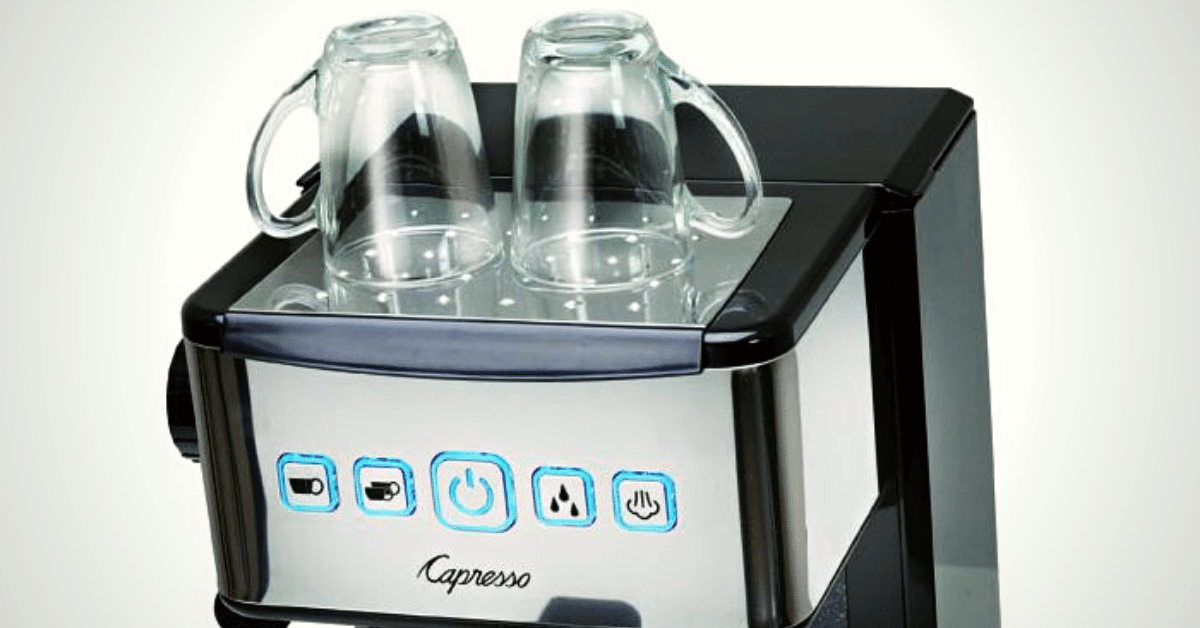
Capacity is an important factor, especially if you live in a household with more coffee enthusiasts.
Most espresso machines feature a water tank attached to the back. This means you’ll have to move the machine across the counter every time you want to refill it. That can be quite annoying to do every day.
To find the ideal capacity, consider how often your household members drink coffee.
A single espresso shot is one ounce. Therefore, a 20-ounce water tank can make roughly 20 cups of espresso.
I say roughly because you should never use up all the water inside the tank. Without it, your machine can overheat and stop working.
Plus, if you’re frothing milk, take into consideration the water inside that will turn into steam.
Pressure
Pressure is what allows an espresso shot to be brewed in seconds. The higher the pressure that pushes hot water through the ground coffee, the quicker the extraction is.
And as you probably know, the best espresso is brewed for 28 to 30 seconds. Now, with a little bit of math, what we get is that you need 9 bars of pressure to make espresso at that rate.
But most machines on the market actually have 15 bars of pressure? What’s up with that?
Well, you see, the numbers indicated on models refer to the pressure at the pump. But most models lose some pressure between the pump and the brew head. So the actual output is actually 9 bars.
So when you’re buying an espresso coffee maker, consider those that produce between 12 to 15 bars of pressure. You don’t want to go with a model that claims to have a 9-bar pressure pump, as their actual input will probably be way lower. And that won’t give you a tasty cup.
Brewing Options

Want to switch up your drinking game every now and then? Sure, espresso is delicious, but sometimes you just want to drink something different.
Don’t expect models with a low price tag to offer a long list of drinks you can make. In fact, many of them will simply offer a basic espresso.
But that doesn’t mean you won’t find certain models with other options available. At the very least, they should offer the option to make a lungo.
In some cases, you might see the “coffee” option. Depending on the model, that can either refer to the lungo, or something more resembling regular black coffee. But considering that the machine pulls 9+ pressure, what you get is still pretty similar to espresso.
Coffee Quality
Naturally, the final result is what matters the more. You don’t want a machine that makes “meh” espresso. You want to drink an enjoyable cup of java.
If you asked me the same question some time ago? I’d say that a machine that uses coffee grounds will surely give you a much better quality espresso than the one using capsules.
If you have a coffee bean grinder – even better. You can have a fresh coffee ground for every cup of joe, nothing can beat that.
But these days, you can find models that make a pretty damn good cup of espresso from a coffee pod. An espresso pod usually comes with dedicated ground espresso beans, already measured for a consistent shot each time.
When choosing an espresso machine, pay attention to the details. Aside from the pressure pump, the heating system is also a factor to consider.
Pretty much all low-cost espresso makers feature a single boiler. But the material it’s made of affects how good it is at keeping water temperature optimal.
Aluminum and brass are cheap, but they can cause temperature fluctuations. Copper is great at conducting heat, but there’s a potential risk of it leaching into the water. If a model features a copper boiler, make sure it has nickel plating which prevents this.
Stainless steel is great since it doesn’t corrode and it’s very stable. But has to be thick, or it won’t conduct heat very well.
Frothing

Like your coffee with milk?
Then look for an espresso machine with a built-in steam wand.
High-end automatic espresso machines often come with an automatic milk frother, so you don’t need to do absolutely anything except wait for it to steam milk.
But within this price range, you can only get a manual wand.
Now, there are two types of wands available – Pannarello and classic (like the one on manual espresso machines.)
The Pannarelllo wand features a sleeve with a hole near the tip that allows air to get inside the milk. The hole makes frothing simple as you don’t have to worry about how you’re positioning it.
This type of milk frother usually allows you to choose between a frothy and creamy foam. To do that, you either twist the wand one way or another or remove a part.
A classic steam wand is slim, and without holes, so it requires a bit of practice to get right. You need to position it in a way so that air gets inside through the tip.
While it has a slight learning curve, a proper steam wand gives you more freedom over how the foam turns out. Plus, you can make nice latte art with it.
Ease of Use
No one wants to waste time flipping through the manual before starting up the espresso machine. And really, there’s no reason why making coffee should be that complicated.
When choosing a model, pay attention to the control panel.
Are there too many buttons and knobs?
Furthermore, how are they labeled?
Certain models feature icons that clearly indicate what they do.
But not going to lie.
I’ve also seen machines with weird icons such as “My” and “@.” And let me tell you, there’s no way I could guess their purpose without a manual.
Cleaning
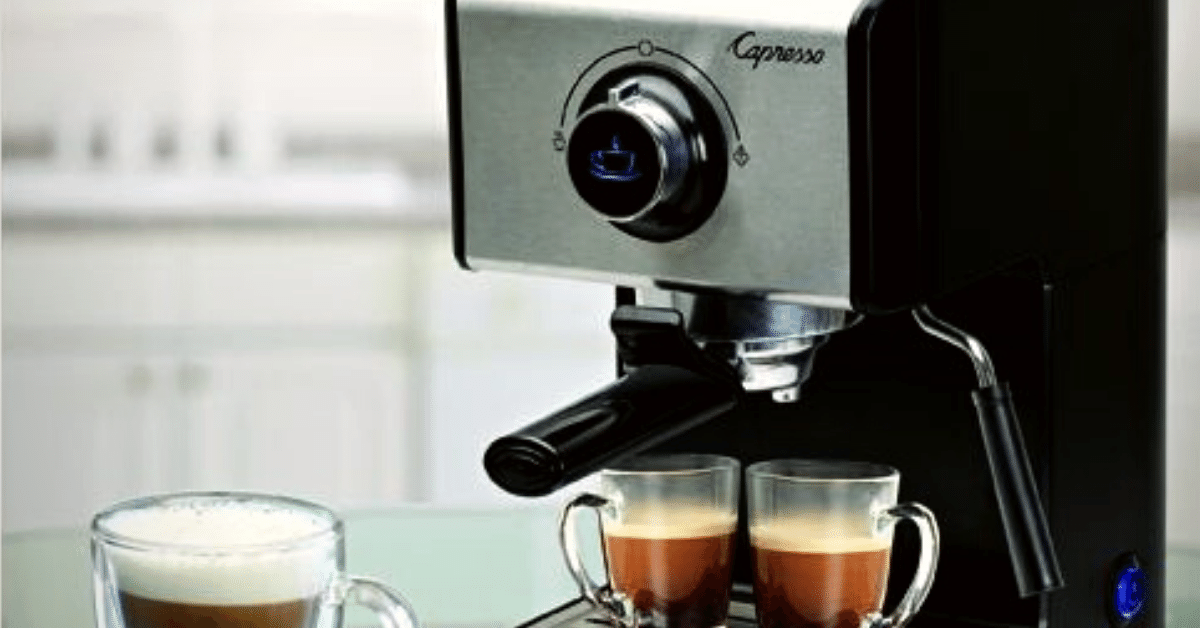
Who likes spending time meticulously cleaning an espresso machine? I surely don’t.
Most machines in this price range won’t have self-cleaning options. But that doesn’t mean that doing it manually should be tough and time-consuming.
In most cases, you clean the interior by running a brewing cycle with a cleaning solution instead of coffee.
But what you actually need to do by hand is clean the removable parts. To make your job easier, look for a model that you can easily disassemble. At the very least, they should have a removable drip tray, so that you can empty it in the sink.
A water tank should also be easily accessible. Ideally, you want it to be mounted on the side. That way, you don’t have to move the espresso maker across the counters whenever it needs to be refilled.
Certain models feature dishwasher-safe parts. That’s something to consider if you simply hate washing dishes at the sink.
FAQ
Have more questions about espresso machines? Here’s a quick FAQ that should answer them.
Is 15 bar or 20 bar better for espresso?
Technically, 15 bar is much closer to the sweet spot for espresso making than 20 bar pressure. But with budget machines, both of these will give the total output that’s roughly the same. In other words, you probably won’t notice the difference.
Can you make good espresso with a cheap machine?
You absolutely can. As long as it has more than 12 bars of pressure, the final output should be a rich and bold cup of espresso with a layer of crema on top.
How much does a professional espresso machine cost?
If we’re talking about commercial-grade machines, they can cost anywhere from 5 to $15,000. As for quality home espresso makers, they usually cost a couple of thousand dollars.
To Sum Things Up
As you can see, you can find some pretty good espresso machines for $200 or less.
And amongst them, the Capresso Café TS Espresso Machine is the one that easily grabs all the attention.
It features a 15-bar pump, a fast-heating boiler, and a Pannarello-style steam wand. That’s everything you need for at-home espresso-based drinks. Plus, you can use both coffee grounds and pods, depending on what you prefer.
All in all, for the price it sells, this espresso maker is worth every cent.

